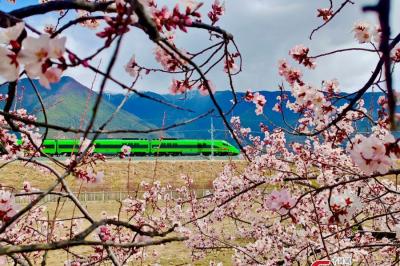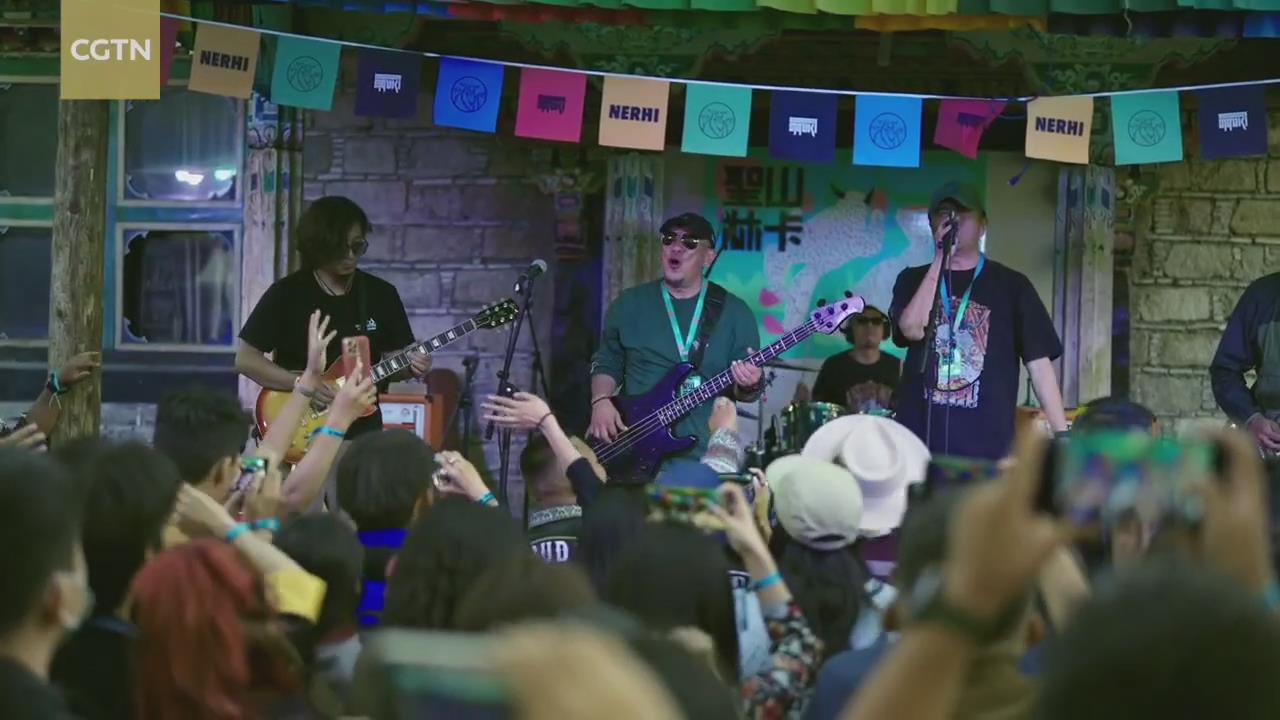BEIJING, Nov. 7, 2023 -- It is a universally acknowledged value and a policy adopted by responsible governments that fine traditional culture is fully protected and modern cultural industries are proactively developed, in order to preserve cultural rights and satisfy the yearning of the people for a better cultural life in the contemporary world. This is particularly manifested in southwest China's Xizang Autonomous Region.
During the past 72 years since the peaceful liberation of Xizang, the central government of China and local authorities in Xizang have made a great investment in protecting the fine traditional culture of Xizang and developing modern cultural industries, accomplishing tremendous achievements and contributing Chinese wisdom to the cause of cultural protection and development for all mankind.
Based on the enormous field work in Xizang, we believe that culture in Xizang has been fully and comprehensively protected, safeguarding the cultural rights of various ethnic groups in the region, and gathering experience that deserves more recognition from the international community.
The study and use of the Tibetan language is protected by law. Since the founding of the Xizang Autonomous Region in 1965, the resolutions and regulations adopted by its people's congress, and the official documents and announcements by governments at various levels and government departments have all been issued in Chinese and Tibetan. The two languages are used in large meetings and major activities organized by local governments, enterprises and public institutions.
In judicial proceedings, the Tibetan language is used to hear cases and make legal documents in accordance with the needs of Tibetan litigants, so as to guarantee the right of Tibetans to use the language for litigation. In addition, the language is widely used in health, postal services, communications, transport, finance, and science and technology.
Tibetan classics are protected and utilized. In 1984, the state allocated funds for the building of the Archives of the Xizang Autonomous Region, which houses and preserves a large number of precious Tibetan archives. The archives in its collection now number more than 3 million items.
Over the past few decades, Xizang has organized large-scale and systematic surveys, and the collection, collation and research of cultural heritage. Since restorative work was done on the Jokhang Temple in 1972, the state has continued to invest huge funds in the maintenance and protection of the Potala Palace, Norbulingka, Jokhang Temple and other cultural relics and historic sites. From 2006 to 2020, the state allocated more than 3.4 billion yuan (about 474 million U.S. dollars) for the maintenance of 155 cultural relic sites under protection.
Meanwhile, the state has invested heavily in Xizang in the following areas: protecting national intangible cultural heritage (ICH) items; recording and conserving the knowledge and skills of the bearers of national ICH items; training ICH practitioners; and assisting them to set up sites for the protection and utilization of ICH and pass on their skills.
Modern education in Xizang has been developing at a fast pace. In old Xizang, there was not a single proper school. The illiteracy rate exceeded 95 percent. From 1951 to 2022, the central government invested more than 200 billion yuan in the region's education. Now, the region has established a modern educational system that includes preschool, primary and middle schools, vocational and technical schools, institutions of higher learning, and continuing and special education institutions.
At present, the region has more than 3,300 schools of various types and at various levels. The completion rate for compulsory education has reached 96.94 percent. Students enjoy 15 years of publicly-funded education.
However, in recent years, some international media have compared schools in Xizang with colonial boarding schools in the history of the United States, Canada, and other countries that aimed to assimilate and persecute the local indigenous people, and have spread slanders that there was "ethnic assimilation" in Xizang schools. This is a fallacy that has been plucked completely out of thin air, confusing truth and fiction.
Since the 1980s, Xizang has gradually implemented preferential policies for the children of farmers and herdsmen, including "free food, free accommodation and free study." These measures not only address the issue of students living far from schools in thinly-populated Xizang, but also alleviate the educational burden on the students' families. Schools in Xizang often feature both day-students and resident students, with the option applied in each case depending entirely on the students' wishes and the situation of their families.
Bilingual education is widely practiced in Xizang schools, with an average of four to six Tibetan language classes per week, ensuring that Tibetan students learn and use their own language. In Qamdo City, about 94 percent of Tibetan students take the Tibetan language examination in the college entrance examination every year. In addition, various schools at the basic educational stage generally arrange a large number of after-school activities and courses for resident students, including many traditional ethnic cultural activities, such as Tibetan calligraphy, traditional music and painting courses.
Anyone who has been to Xizang schools and done research about them would draw the conclusion that they are completely different from the colonial boarding schools in Western history. Any statements equating the two are based either on ignorance or unspeakable political considerations.
Xizang's achievements in cultural protection and development over the past 72 years are attributable to three factors. Firstly, the government attaches great importance to the issue and makes great investments. Secondly, the cultural needs of the people are fully respected. Thirdly, people in Xizang play a pivotal role in cultural protection and development.
Based on observation of the Xizang case, it is obvious that cultural protection and development is not an isolated field, but one that requires coordinated efforts among different sections of the state and society, with a responsible government that really cares about its people playing an indispensable role.
By: Dramdul (Editor's note: Dramdul is director-general of the China Tibetology Research Center. The views expressed in this article are those of the author and do not necessarily reflect the position of Xinhua News Agency.)
|
- Home
- News Tibet |Exclusive |China |World |Related News |Latest
- Documents White Papers |Others
- Photo Politics |Economy & Society |Culture & Religion |Human & Nature |Beautiful Tibet |Other Tibetan-Inhabited Area |Exchanges |Related
- Video News |Documentary |Micro-Video |Entertainment
- Art
- Tourism
- In Focus
- About Tibet






